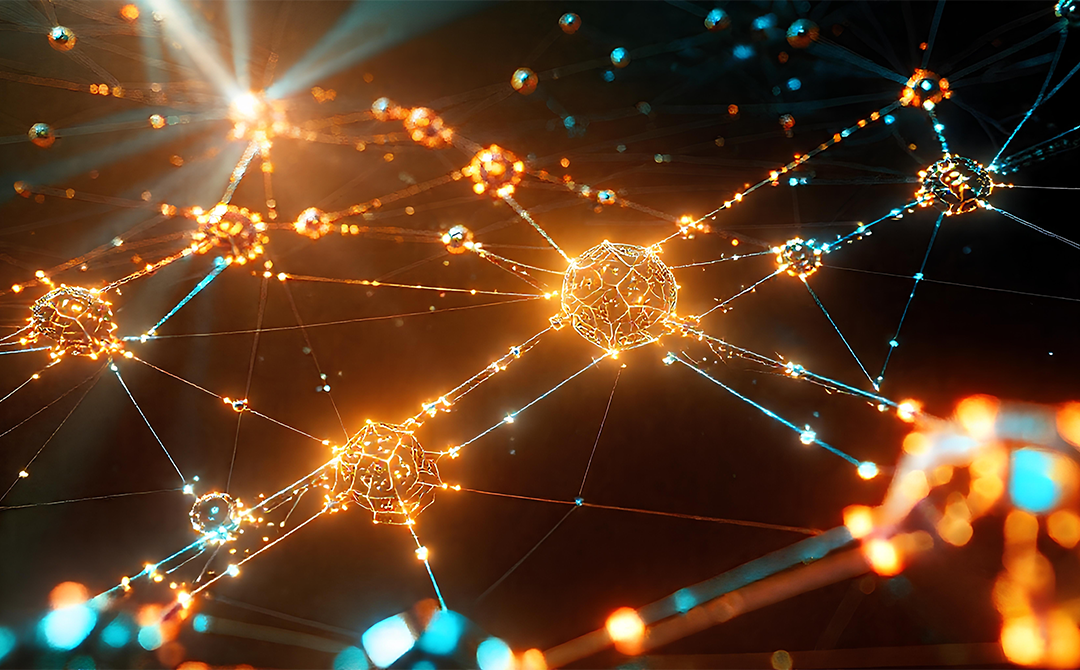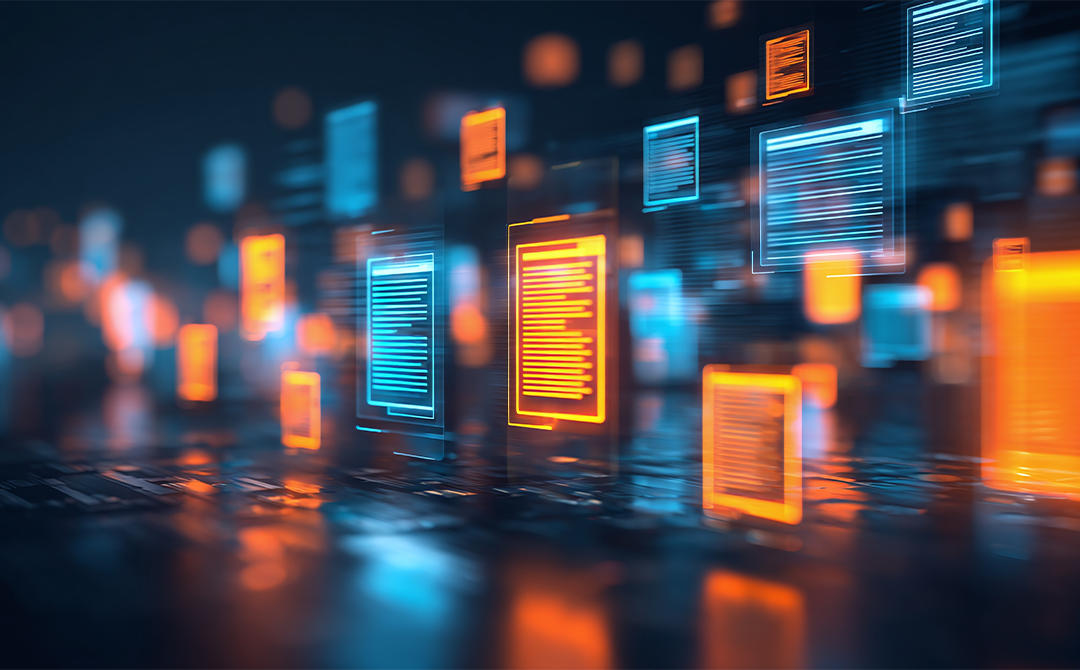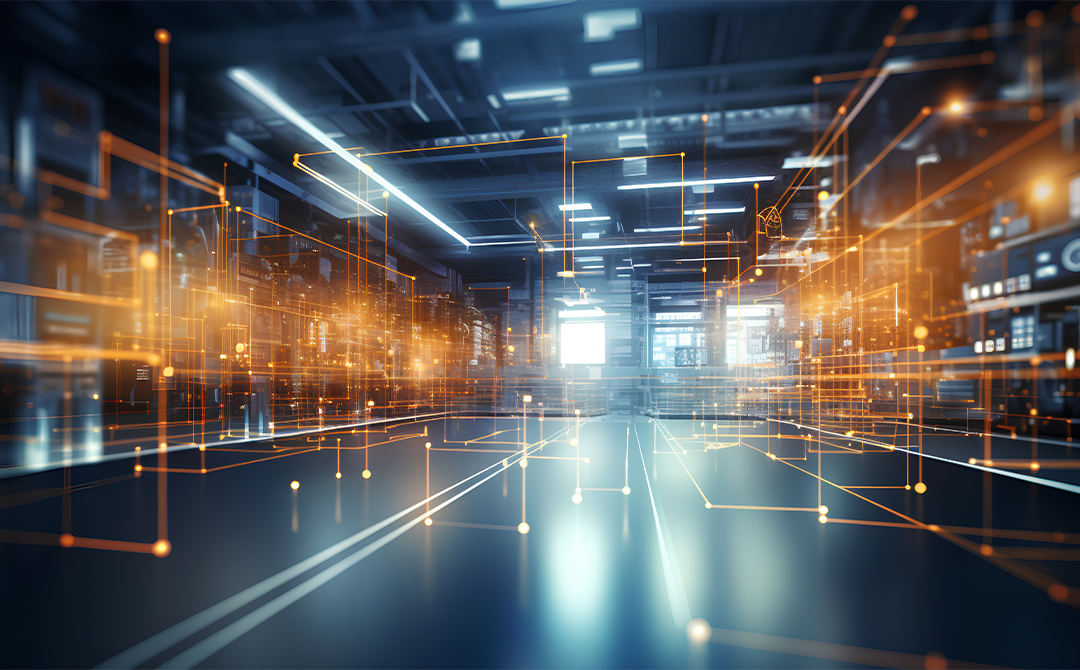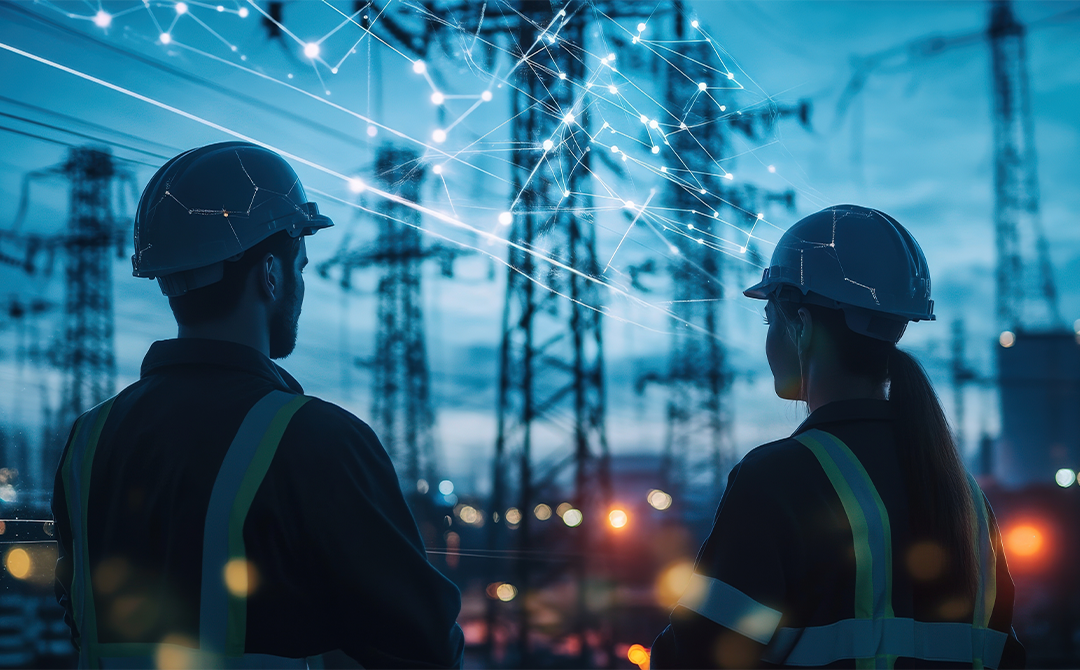
What do autonomous drones, self-driving cars, and smart healthcare assistants have in common?
They're all leveraging Multi-Agent Systems (MAS).
Multi-agent systems, often enhanced by AI agent swarm intelligence, are like a team that coordinates efforts seamlessly. Rather than a single system performing all the activities, MAS consists of several agents that are intelligent and are engaged in different segments of a problem, such as digital colleagues. They sense their environment, make spontaneous decisions, and collaborate in a bid to accomplish their duties efficiently, quickly, and wisely.
Why does this matter? Today's problems, from city traffic management, delivering healthcare solutions or remotely coordinating warehouse robots, are just too complex for one AI to solve. MAS distributes the intelligence and gives systems a level of adaptability, scalability, and resiliency that single systems cannot provide.
In this article, you will learn what Multi-Agent Systems are, how they operate, and how they are important for creating AI that can think, react, and perform in the real world.
What Is a Multi-Agent System?
A Multi-Agent System (MAS) is defined as a set of agents or autonomous entities that operate independently while still having the ability to interact with each other and cooperate in order to solve problems or fulfill tasks. Agents can include software applications, robots, digital assistants, etc.
The notable distinction in MAS from traditional AI approaches is that MAS does not have a single brain or centralized approach to intelligence. Instead, it distributes the intelligence across the network of agents. Each agent makes its own decisions based on local information, thus enhancing total system capability. With AI agent swarm intelligence, this distribution of intelligence enables MAS to tackle real-world problems that are too large, dynamic, or unpredictable for any system's scaling approach.
Where Are MAS Used?
MAS are already being used in a variety of sectors.MAS are especially valuable in:
- Robotics: Surveillance drones in the farms or inventory management robots.
- Healthcare: AI platforms that coordinate activities in the field of diagnostics, treatment, and monitoring of patients.
- Smart Cities: Agents to address traffic lights, power, grid, and communication across the publicly owned services.
- Finance: Trading bots that are doing trading under real-time financial markets.
Why use MAS instead of traditional AI?
The traditional AI is centrally based and is effective when dealing with simple scenarios. But in real-life, complex scenarios, there is a bottleneck, restricting real-time decision making, scaling, and adaptation.
This is addressed by MAS, which splits up control among a large number of intelligent agents. Such an arrangement renders MAS more:
- Scalable: You can add more agents without causing the system to become overloaded.
- Resilient: The agents do not go down with a failing one.
- Rigid: The agents learn slowly, and project delays are observed when there is new information or variability in the environment.
Evolution of Multi-Agent Systems and AI Agent Swarm Intelligence
Multi-agent systems did not come out of the blue. Their origin is not only deep into computer science, but also into nature and biology.
Simple creatures such as ants and birds have been studied to solve complex issues through collective behavior by scientists before the use of MAS to manage a fleet of autonomous vehicles or coordinate drones.
From Nature to Code
Take ant colonies, for instance. There is no single ant in charge, yet as a whole colony, they are able to find food, build nests, and protect themselves effectively. How? By means of local communication, minimal rules, and emergent behaviour. Computer scientists were led by this natural logic to attempt to emulate such behavior in artificial agents, leading us to today call what resulted AI agent swarm Intelligence, one of the most important subsets of MAS.
More recently, around the beginning of the 2000s, methods such as Particle Swarm Optimization (PSO) and Ant Colony Optimization (ACO) were invented. The techniques involved the concepts of collective move and feedback cascade to resolve any optimization issue as when to deliver the delivery truck based on routes to build a machine learning model.
Evolution Driven by Need
As real-world problems became more interconnected and dynamic, centralized AI systems began to hit their limits. That’s when industries turned to MAS.
MAS evolved out of initial simulations of bird flocking to currently more complex systems in application to warehousing, smart cities, and autonomous vehicles, and has become a backbone system of AI and an essential paradigm that can be applied in several forms.
This is well illustrated in TU Delft, where researchers created the drone AI agent swarms that could be used during search-and-rescue operations after disasters. Each drone does not contact the others, just searches every corner of the space, finding and avoiding obstacles, and communicates with adjacent drones, sharing the results it has.
The impressive part is that GPS or central command is not used in these drones. Rather, they collectively map the environments using AI agent swarm intelligence and adapt in a real-time scenario. This would make the system more responsive, predictable, and more appropriate in situations of chaos or high-risk where speed and coverage play an important role.
Case Study: Autonomous Drone Swarms in Agriculture
Autonomous drone swarms, powered by multi-agent systems (MAS), are transforming agriculture by enabling precise and efficient crop management. These drones collaborate to monitor fields, detect plant diseases, and spray fertilizers or pesticides with minimal human intervention. By distributing tasks across multiple agents, farms can cover vast areas quickly while ensuring consistent accuracy in crop monitoring.
Research highlights that MAS-coordinated drone swarms not only reduce operational time but also optimize the use of resources like water and chemicals. This results in higher crop yields, lower costs, and more sustainable farming practices, making them a valuable innovation in modern agriculture.
Core Concepts of Multi-Agent Systems
Intelligent agents are self-directing entities that can sense their environment, decide, and act at the core of any Multi-Agent System. However, in order to get the real sense of how MAS works, we have to examine some of the main concepts under which these systems run.
Agents
An agent is essentially an independent problem-solver. It could be a robot, a software bot, or even a sensor. What makes it “intelligent” is its ability to observe, reason, and act without human intervention.
Agents can be:
- Reactive: They respond to changes in their environment.
- Proactive: They pursue specific goals using internal logic.
- Deliberative: They plan based on predictions.
- Hybrid: A combination of the two above, and uses flexibility and responsiveness.
Both types have a different purpose identified with respect to the complexity of the task and the aim of the system.
Interaction
The interaction of these agents determines what makes a system multi-agent. According to the objective, they can exchange data, seek assistance, or even compete. The communication usually occurs under message passing protocols, whereby agents share information in real time, and therefore they are able to make all at once faster and more accurately.
In cooperative spacings (such as the case in healthcare or warehouse robots), the agents strive to attain a common objective. In a competitive situation (such as financial trading), they attempt to outsmart one another whilst still being part of the greater whole.
Swarm Intelligence
AI agent swarm intelligence is one of the most interesting phenomena of MAS, meaning that a number of agents react according to the rather simple rules, yet demonstrating rather unsurprising complexes of actions. Such AI agent swarm intelligence examples are all over in nature: the shortest path to food, or hives, or birds in a flock without a leader are all over.
The Environment
Any agent has its environment that it has to operate in, which can be physical or digital. It might be a warehouse floor, a grid in which to position a city, a stock market, or a cloud-based simulation. The environment is dynamic, i.e., agents have to adapt continuously to new information, to changes (such as weather conditions, system failures, or user behavior).
The scalability and real-time interactions among the agents should be well supported by the environment, which is characterized by the growth of complexity in increasing the number of agents in a good MAS design.
Decentralized Control
Perhaps the most defining feature of MAS is its decentralized architecture. There’s no “master controller” telling agents what to do. Instead, each agent operates independently but contributes to a collective goal.
This makes MAS incredibly robust and flexible. Failure of one agent does not mean that the system will stop. The system is scalable with no interference in case of the addition of new agents. It is this decentralization that makes MAS the cornerstone of addressing modern challenges, such as automated driving, smart energy grids, and cybersecurity, that must change in response to incoming attacks.
Types of Multi-Agent AI Systems
MAS can adopt various forms: it depends on the problem that is being solved and on the environment in which it is used. Knowing the types enables us to recognize the point at which MAS can be implemented and the behavioral patterns that they are likely to take in the real world.
Cooperative Systems: Team Players
Agents will collaborate in a goal-oriented type of cooperative system. They are quite active, exchange information, disperse tasks, and exchange efforts to promote the joint performance. This arrangement is widely used in places where precision, coordination, and efficiency are highly important.
Example: MAS agents in healthcare may include various diagnostic machines, patient monitoring devices, and therapies. By exchanging information, these agents will be able to cooperate to give a more accurate and personal diagnosis and accelerate treatment, and minimize his low human error.
Competitive Systems: Survival of the Smartest
In competition, agents act with autonomy and in a way incompatible with each other. They are operated to outperform other agents in a bid to attain personal objectives. Although it may sound disorderly, healthy competition may be used to achieve quicker innovation, enhanced performance, and sound decision-making.
Example: In the algorithmic trading, agents of MAS are numerous attempts of financial algorithms to maximize returns. Exchanges allow every agent to make their trades, adjust to the market forces, and react to competitors in real time without centralized management.
Hybrid Systems: Best of Both Worlds
The majority of real-life environments are neither totally cooperative nor totally competitive but a combination of the two. In this, hybrid MAS gets involved. These systems have collaborative and competitive dynamics that enable agents to adapt to specific settings as they make different adjustments.
A common one is Multi-Agent Reinforcement Learning (MARL), which often integrates AI agent swarm intelligence for more adaptive strategies in autonomous driving. In this instance, self-driving automobiles (agents) work harmoniously in preventing accidents, as well as competing with each other over the finite Russ road space, thereby rationalizing their personal path schedules and velocities to their benefit.
The hybrid nature also renders MAS more practical and therefore adaptable in unforeseeable (and perhaps high-stakes) situations.
Architecting Scalable Multi-Agent AI Systems
System Design Considerations
The architecture of a multi-agent system must be built to support scalability, flexibility, and robustness. As the number of agents grows, systems should maintain performance without bottlenecks or failures.
Key design elements include:
- Agent interaction protocols: Define how agents communicate, share goals, and negotiate conflicts.
- System monitoring: Continuous observation of agent performance and emergent behaviors to prevent breakdowns.
- Agent coordination: Mechanisms that allow agents to divide tasks, adapt to dynamic environments, and align with system-wide objectives.
Technologies and Platforms
Developing scalable multi-agent systems requires specialized tools and frameworks that support communication, autonomy, and interoperability.
Some key enablers include:
- JADE (Java Agent Development Framework): That integrates AI agent swarm intelligence for collaborative learning.
- ROS (Robot Operating System): A flexible framework for building multi-agent robotic applications, supporting collaboration in robotics and autonomous vehicles.
- Multi-Agent Reinforcement Learning (MARL): Advanced by platforms such as Google DeepMind and OpenAI, enabling agents to learn cooperative and competitive strategies in complex environments.
Amazon’s Multi-Agent System for Warehouse Management
Amazon provides a real-world example of how scalable MAS can transform operations. Its robotic multi-agent system powers automated warehouses where hundreds of robots coordinate to manage inventory and fulfill orders. (Source)
- Coordination: Robots communicate to avoid collisions and optimize movement paths.
- Efficiency: Tasks like storing, retrieving, and delivering goods are executed with minimal human intervention.
- Impact: This system has significantly reduced operational costs, improved accuracy in order fulfillment, and scaled seamlessly as warehouse demand has grown.
Applications of Multi-Agent Systems in Complex Problem Solving
Multi-agent systems shine in environments where traditional AI falls short, especially in fast-paced, high-volume, or decentralized scenarios. Let’s look at some Multi-agent systems examples.
Healthcare
Healthcare is complex, fragmented, and constantly changing. MAS, often strengthened by AI agent swarm intelligence, helps by bringing together various intelligent agents from diagnostic tools and medical records to wearable sensors to deliver faster, more accurate, and personalized care.
A good example is the MATEC framework (Multi-AI Agent Team Care), which was piloted in under-resourced hospitals for treating sepsis. Multiple AI agents, including digital doctors and health professionals, collaborated to recommend treatments and track patient risk in real time. The result? Doctors found it more accurate and highly useful for frontline care.
Agriculture
Huge agricultural fields can only be controlled with eyes and brains above them. Using MAS, drone swarms can cover extensive territories, transfer information, allocate tasks, and respond to the alterations in their flight according to the condition of crops, the landscape, or the climate.
The practice of precision farming is applying these AI agent swarm intelligence-inspired multi-drone systems to manage the details of crops, identify pests, and manage irrigation. All the drones are operated separately but are in constant communication with each other to create no redundancies and cover all the territory equally. This has been shown to significantly increase monitoring efficiency while cutting down operational costs.
Urban Planning
Multi-agent systems (MAS) are transforming smart cities by optimizing traffic, energy, and public services through decentralized coordination. Systems like SURTRAC and SCATS use intelligent traffic signals that adapt in real time, cutting congestion, reducing emissions, and improving travel efficiency. By reacting to changing road conditions without centralized control, MAS, enhanced by AI agent swarm intelligence, makes urban infrastructure more responsive, sustainable, and resilient.
Beyond traffic, MAS models simulate citizen behavior, enabling planners to test strategies for mobility and resource allocation. Predictive monitoring and anomaly detection also help prevent disruptions, ensuring cities deliver smarter, faster, and greener services to residents.
Autonomous Vehicles
Autonomous vehicles depend on multi-agent systems (MAS) for safety and coordination. Using vehicle-to-everything (V2X) communication, cars exchange speed and position data to avoid collisions and navigate traffic collectively. Tools like Cooperative Adaptive Cruise Control (CACC) reduce traffic instability, improve flow, and prevent “phantom jams.” MAS transforms vehicles into cooperative fleets rather than isolated units.
Emerging approaches like multi-agent reinforcement learning (MARL) allow self-driving cars to learn adaptive strategies for merging, lane changes, and intersections. Though challenges remain in real-world deployment, MAS and MARL offer the foundation for safer, smarter, and more cooperative road ecosystems.
Transportation
Cities run on data, and when data flows in from traffic lights, vehicles, and road infrastructure, MAS takes over. In smart traffic systems, each signal acts as an agent, sometimes enhanced with AI agent swarm intelligence, to adjust based on traffic volumethat adjusts based on traffic volume, nearby intersections, and accidents. Such MAS-based coordination leads to decreased waiting times and the avoidance of congestion, so far without central control.
In the autonomous vehicle domain, Vehicle-to-Vehicle (V2V) communication is powered by MAS. All automated vehicles communicate with other vehicles that are within their vicinity with speed, pattern of movement, as well as intention to prevent accidents, rerouting in real-time, and all this creates a traffic pattern, a smooth, free flow.
Finance
The multi-agent trading systems with autonomous agents competing and adapting in real time have MAS driving the financial markets. Agents are trading algorithms reflecting further behavior on the market that can issue buy/sell orders and respond to what other agents do. This contest, powered by AI agent swarm intelligence, makes the conditions of the market we operate in a close replication of reality and allows the developers to test the strategies in unreliable conditions.
Multi-agent systems AI also helps in stress testing economic models, simulating consumer behavior, and even optimizing fraud detection across decentralized financial networks.
Robotics
Robotics is one of the most natural fits for Multi-Agent Systems. When used in facilities such as warehouses, manufacturing lines, or disaster areas, MAS can coordinate armies of robots to collaborate, evade collisions, partition tasks, and adapt to changing conditions in real-time.
Amazon operates one of the largest Multi-Agent Systems in the world, having more than 750,000 robots such as Hercules, Titan, and Proteus working throughout the fulfillment centers. These agents, being smart, make local decisions and also organize through cloud infrastructure. This distributed system enables fast, collision-free operations and has boosted productivity by 25% at next-gen sites. Amazon’s approach shows how MAS can deliver scalable, efficient, and resilient automation on a global scale.
Future Trends and Challenges in Multi-Agent Systems
MAS is rapidly becoming the backbone of scalable, decentralized AI across industries. As adoption grows, several multi-agent systems trends for 2025 are shaping their future:
1. Agentic AI and Human-Agent Teams:
Companies are shifting toward hybrid systems where intelligent agents work alongside humans. While trust in autonomous agents dropped to 27% in 2024, firms that deployed MAS at scale reported up to 5× higher returns than those in pilot stages.
2. Blockchain and Explainability:
To build trust, MAS is integrating blockchain for secure decision logging and smart contracts. Paired with Explainable AI (XAI), agents can now provide clear, auditable reasons for their actions, critical in healthcare and finance.
3. Generative MAS with LLMs:
Foundation models combined with AI agent swarm intelligence are boosting MAS performance and faster coordination. These systems combine LLM reasoning with shared memory, making them smarter, more adaptive, and ideal for real-time applications.
Final Thoughts on What’s Ahead
Multi-agent systems are no longer experimental. They’re powering real-time, intelligent solutions across industries. Their strength lies in decentralization. Instead of one system making every decision, with AI agent swarm intelligence, multiple intelligent agents work together toward a shared goal. This allows for faster, local decisions that adapt quickly to change.
However, to fully unlock their potential, organizations must address key challengesnlike building trust, ensuring transparency, and tackling security and compliance issues. As MAS evolves, it’s reshaping how humans and machines collaborate at scale.
At Tredence, we’re helping organizations lead this shift. We build cutting-edge AI solutions using agent-based models, reinforcement learning, and secure, high-volume data systems.
Whether you're new to MAS or ready to scale, we’ll help you turn complexity into competitive advantage.
Start your MAS journey with Tredence today.
FAQs
1. What are some real‑world applications of multi‑agent systems?
The multi-agent systems are very popular in robotics, the sphere of healthcare, logistics, smart cities, and financial areas. They allow autonomous drones, warehouse robots, trading bots, and diagnostic assistants to cooperate with or compete with others and find solutions to complex tasks in dynamic, decentralized environments much faster than single-agent models.
2. How do Multi-Agent Systems work?
Multi-Agent Systems (MAS) function by coordinating autonomous agents that sense, decide, and act within an environment. Agents can communicate, collaborate, or compete, depending on goals. Their decentralized structure ensures scalability, flexibility, and resilience, enabling them to solve complex, distributed problems more effectively than centralized single-agent systems.
3. What is swarm intelligence in Multi-Agent Systems?
AI agent Swarm intelligence refers to collective behavior where simple agents follow local rules without central control, producing complex group intelligence. Inspired by ants, bees, and bird flocks, it underpins MAS algorithms like Particle Swarm Optimization and Ant Colony Optimization, allowing agents to solve optimization, routing, and resource allocation challenges efficiently.
4. What are the challenges of implementing Multi-Agent Systems?
Key challenges in implementing MAS include coordination overhead, scalability issues, and unpredictable emergent behaviors. Security risks and interoperability concerns add complexity. Ensuring robust communication, effective monitoring, and governance frameworks is vital to achieve safe, reliable, and efficient deployment of MAS across real-world applications such as traffic systems or autonomous fleets.
5. How are Multi-Agent Systems different from traditional AI systems?
Unlike traditional AI, which relies on centralized processing, Multi-Agent Systems are decentralized, comprising autonomous agents that interact dynamically. MAS excel at managing complex, distributed, and adaptive problems like traffic control or autonomous vehicles, offering greater scalability, resilience, and flexibility than single-agent, centrally controlled AI systems.

AUTHOR - FOLLOW
Editorial Team
Tredence




